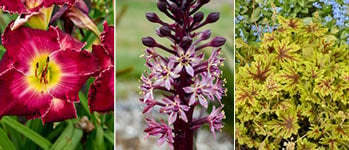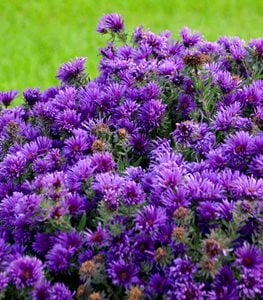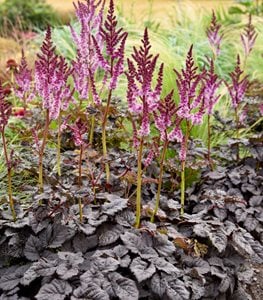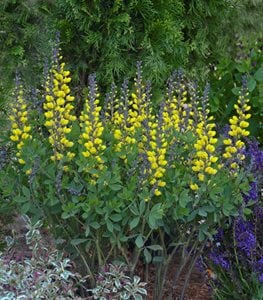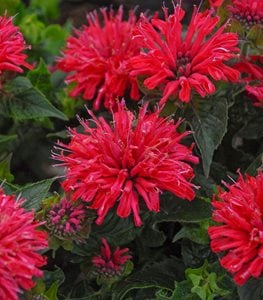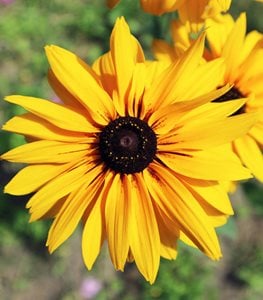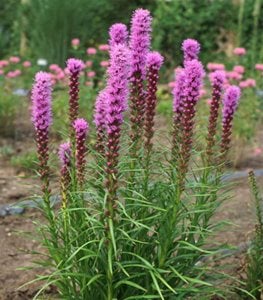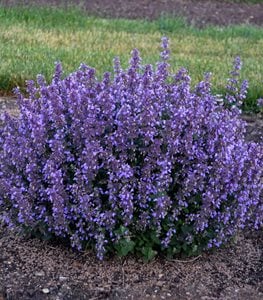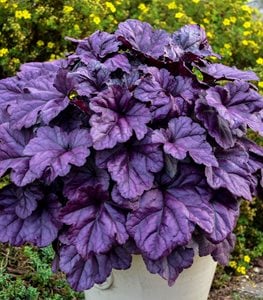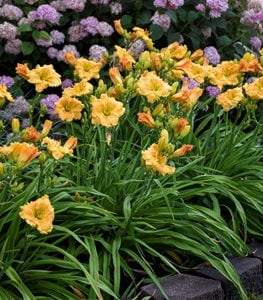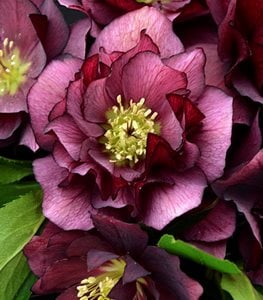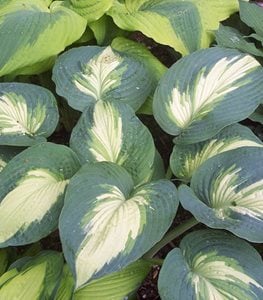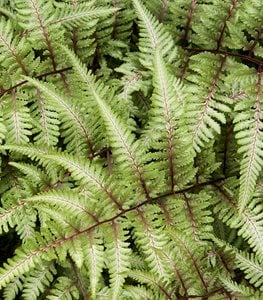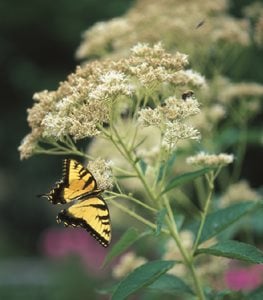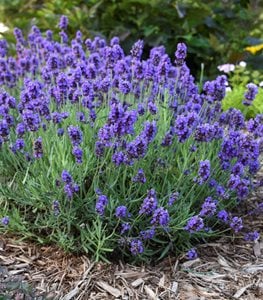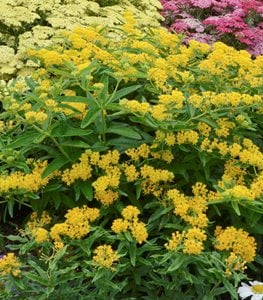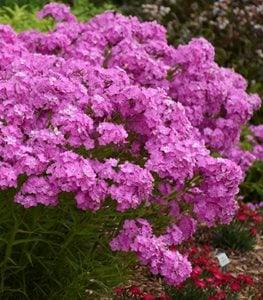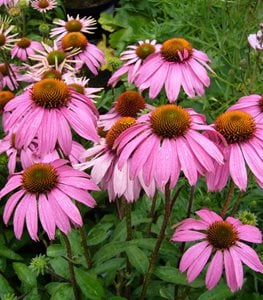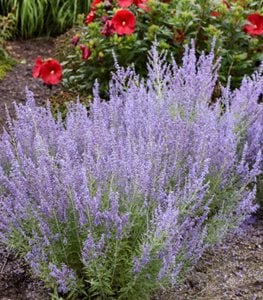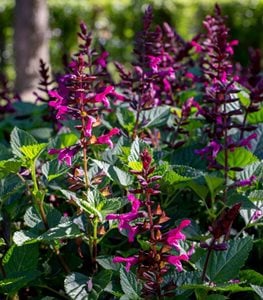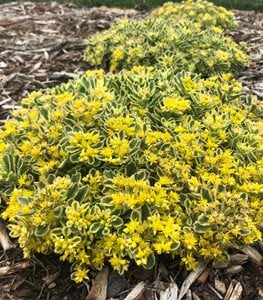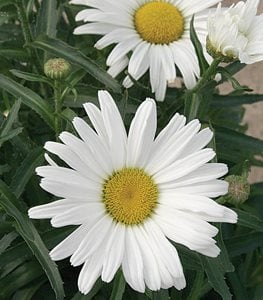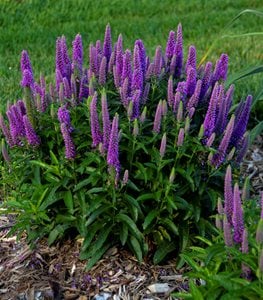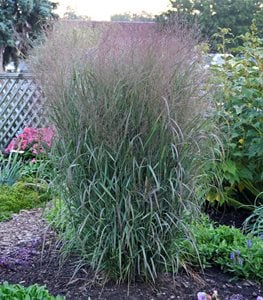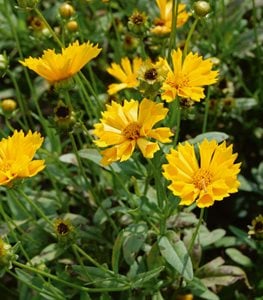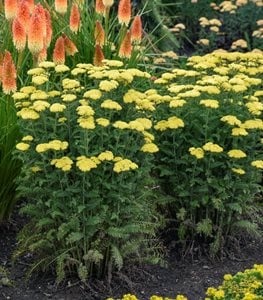25 LOW-MAINTENANCE PERENNIALS TO GROW
Grow these easy-care perennials for long-lasting color in the landscape.With today’s busy lifestyles, it can be difficult to keep up with yard maintenance. Whether you’re a novice or experienced gardener, plants that are easy to care for save on time, money, and maintenance, and are virtually foolproof to grow. Perennial plants come back reliably from year to year, providing long-lasting texture, color, and structure to beds, borders, and containers.
When choosing low-maintenance perennials for your yard, make sure they are hardy in your growing zone. Choose perennials that are native to your region, as they have adapted to local climate and growing conditions. Site plants where they are most likely to thrive and provide adequate light, water, and a healthy soil medium. Group plants together that have similar growing needs. Low-maintenance perennials will generally be more adaptable to different growing conditions and more resistant to pests and diseases.
Here are some of the best low-maintenance perennials to add to your landscape:
ASTER (Symphyotrichum spp.)
Zones: 3-10, depending on the variety
Exposure: Full sun to part shade
Habit: Upright or mounding spreading habit
Height/Spread: 1 to 6 feet tall, 6 inches to 3 feet wide
Bloom time: Late summer to fall
This quintessential fall-blooming perennial produces daisy-like flowers in shades of purple, blue, pink, or white. The flowers support late-season pollinators including bees and butterflies. Plants are tolerant of a range of soils but prefer good drainage. Use in a meadow or native landscape. Read more about growing asters.
Pictured: Grape Crush New England aster from Proven Winners.
ASTILBE (Astilbe spp.)
Zones: 3-9
Exposure: Full sun to shade; flowers best with partial sun
Habit: Upright clumping habit
Height/Spread: 1 to 4 feet tall and wide
Bloom time: Summer
Astilbe thrives in moist, semi-shaded areas such as woodland borders, along stream banks and other water features. This perennial plant produces delicate ferny foliage and feathery flower spikes in colors of red, purple, lavender, pink, and white. Plants are exceptionally hardy, tolerant of different light conditions, and resistant to pests and diseases. Read more about growing astilbe.
Pictured: 'Dark Side of the Moon' astilbe from Proven Winners.
BAPTISIA (Baptisia spp.)
Zones: 3-9
Exposure: Full sun to part shade
Habit: Upright clumping habit
Height/Spread: 3 to 4 feet tall and wide
Bloom time: Late spring to early summer
Native to woodlands and grasslands of North America, Baptisia is a long-lived herbaceous perennial with a tall elegant growth habit and multi-seasonal interest. Also known as false indigo, spires of pea-like blooms occur in shades of blue, purple, orange, yellow, and white. Baptisia is exceptionally hardy, reliable, and drought tolerant once established. Plant in a mixed border or native garden. Read more about growing baptisia.
Pictured: Decadence® 'Lemon Meringue' false indigo from Proven Winners.
BEE BALM (Monarda spp.)
Zones: 3-9
Exposure: Full sun to part shade
Habit: Upright spreading habit
Height/Spread: 1 to 4 feet tall, 1 to 3 feet wide
Bloom time: Late spring to fall
Monarda flowers bloom over an exceptionally long time, providing a steady source of food for hummingbirds, bees, and butterflies. Whorls of tubular flowers come in colors of red, purple, pink, or white. This hardy native is tolerant of a range of soils, is somewhat drought tolerant, and resistant to most pests and diseases. Use in a mixed border, meadow garden, or native landscape. Read more about growing bee balm.
Pictured: ‘Pardon My Cerise’ bee balm from Proven Winners.
BLACK-EYED SUSAN (Rudbeckia spp.)
Zones: 3-9
Exposure: Full sun
Habit: Upright habit
Height/Spread: 1 to 4 feet tall, 1 to 2 feet wide
Bloom time: Summer to fall
Black-eyed Susan is a favorite flowering perennial for cottage-style gardens. Daisy-like rays of petals occur in summer and fall in rich tones of gold, bronze and brown. Plants are tolerant of poor soil, have few pests or diseases, and need little or no maintenance except for deadheading. Naturalize this North American native in meadows, borders, or mass plantings. Read more about growing black-eyed Susan.
BLAZING STAR (Liatris spp.)
Zones: 3-9
Exposure: Full sun
Habit: Upright habit
Height/Spread: 1 to 5 feet tall, 6 inches to 2 feet wide
Bloom time: Summer to fall
Native to North American prairies, meadows, and open woodlands, Liatris is a rich source of nectar and pollen for bees, butterflies, and other beneficial insects. Also known as gayfeather, the showy bottlebrush flower spikes come in colors of purple, pink, or white. This tough perennial is tolerant of heat, drought, and poor soils, making it virtually indestructible. Use in a native landscape, meadow garden, or mass planting. Read more about growing blazing star.
Pictured: ‘Kobold’ blazing star from Proven Winners.
CATMINT (Nepeta spp.)
Zones: 3-9
Exposure: Full sun to part shade
Habit: Mounding clumping habit
Height/Spread: 1 to 3 feet tall and wide
Bloom time: Late spring to fall
Nepeta is one of the best low maintenance perennials, with soft gray-green foliage and blue, lavender, or white tubular flowers that bloom for months. Plants are exceptionally cold hardy, tolerant of most soils, and need little supplemental fertilizer or watering. Add catmint to an herb garden, mixed border, or rockery. Read more about growing catmint.
Pictured: ‘Cat’s Pajamas’ catmint from Proven Winners.
CORAL BELLS (Heuchera spp.)
Zones: 3-9
Exposure: Full sun to shade
Habit: Upright mounding or spreading habit
Height/Spread: 8 to 12 inches tall, 12 to 24 inches wide
Bloom time: Late spring to early summer
Coral bells are grown primarily for the foliage that comes in a wide range of colors and shapes. One of the easiest perennials to grow, this versatile plant is tolerant of sun or shade, poor soils, drought, cold, and heat. Plants will perform best and have optimal coloring in partial shade. Use in a woodland border, mass plantings, or containers. Read more about growing coral bells.
Pictured: Dolce® 'Wildberry' coral bells from Proven Winners.
DAYLILY (Hemerocallis spp.)
Zones: 3-9
Exposure: Full sun
Habit: Upright clumping habit
Height/Spread: 1 to 6 feet tall, 1 to 4 feet wide
Bloom time: Late spring to fall
One of the most popular summer flowering perennials, daylily is grown for the strappy green foliage and trumpet-shaped flowers that come in a wide range of colors and patterns. Plants are exceptionally hardy, long-lived, and virtually carefree once established. Provide regular water and well-draining soil. Use in a mixed border, beds, and mass plantings. Read more about growing daylilies.
Pictured: Rainbow Rhythm® 'Orange Smoothie' daylily from Proven Winners.
HELLEBORE (Helleborus spp.)
Zones: 4-9
Exposure: Full sun to partial shade
Habit: Upright spreading habit
Height/Spread: 1 to 4 feet tall, 1 to 3 feet wide
Bloom time: Winter to spring
Hellebore flowers are a welcome sight in the landscape at a time of year when little else is in bloom. Cup-shaped single or double flowers occur in a wide range of colors and patterns. These tough perennials are pest and disease resistant and will grow in different soils as long as there is good drainage. Mass along a slope to enjoy the downward facing blooms, or naturalize in a woodland setting. Read more about growing hellebores.
Pictured: Wedding Party® True Love hellebore from Proven Winners.
HOSTA (Hosta spp.)
Zones: 3-9
Exposure: Partial sun to shade
Habit: Upright clumping habit
Height/Spread: 2 inches to 4 feet tall, 5 inches to 5 feet wide
Bloom time: Summer
One of the most popular shade perennials, hosta is grown primarily for the bold foliage that occurs in an array of colors, patterns and shapes. Varieties range from dwarf to large specimens five feet across. Hostas thrive in difficult sites where little else will grow including deep shade and underneath trees. Plants are long-lived and virtually carefree. Use in a woodland border, mass plantings, or containers. Read more about growing hostas.
Pictured: Shadowland® 'Hudson Bay' hosta from Proven Winners.
JAPANESE PAINTED FERN (Athyrium nipponicum var. pictum)
Zones: 3-9
Exposure: Partial to full shade
Habit: Upright arching habit
Height/Spread: 1 to 2 feet tall and wide
Japanese painted fern is a reliable perennial that is grown for the delicately patterned fronds with silver, green or burgundy variegation. This easy-to-grow deciduous fern tolerates deep shade and acidic soil, making it a good choice for challenging sites. Protect from hot afternoon sun. Grow in a shade border or woodland garden.
JOE PYE WEED (Eutrochium spp.)
Zones: 3-9
Exposure: Full sun
Habit: Upright spreading habit
Height/Spread: 3 to 8 feet tall, 1 to 5 feet wide
This native herbaceous perennial can be found growing in roadside ditches, moist meadows, and woodland thickets. Showy plumes of pink, purple, or white flowers are a favorite late season nectar source for migrating butterflies and other pollinators. Plants are tolerant of heat, cold, and different soils as long as they are kept moist. Site in a meadow garden or in back of a mixed border.
LAVENDER (Lavandula spp.)
Zones: 5-9
Exposure: Full sun
Habit: Upright bushy habit
Height/Spread: 1 to 4 feet tall, 1 to 5 feet wide
Bloom time: Late spring to early fall
Lavender is a popular garden herb with many ornamental, culinary, and medicinal uses. This woody perennial is drought resistant, needs little or no supplemental fertilizer, and is pest and disease resistant. Use in mixed borders, mass plantings, or herb gardens. Read more about growing lavender.
Pictured: Sweet Romance® lavender from Proven Winners.
MILKWEED (Asclepias spp.)
Zones: 3-9
Exposure: Full sun
Habit: Upright bushy habit
Height/Spread: 1 to 6 feet tall, 1 to 3 feet wide
Bloom time: Summer
A favorite of butterflies, bees, and other beneficial insects, milkweed is an essential flowering plant for native landscapes, meadow gardens, and pollinator borders. Flowers occur in tight clusters in shades of pink, purple, white, orange, or yellow. This tough native perennial can thrive in poor soils, and is tolerant of heat, cold, and drought. Read more about growing milkweed.
Pictured: ‘Hello Yellow’ milkweed from Proven Winners.
PHLOX (Phlox spp.)
Zones: 3-9, depending on the variety. Phlox drummondii is grown as an annual.
Exposure: Full sun
Habit: Upright, spreading or creeping habit
Height/Spread: 4 to 48 inches tall, 6 to 36 inches wide
Bloom time: Spring to fall, depending on the variety
Phlox is a hardy herbaceous perennial with cheerful star-shaped flowers in a range of colors. Tall phlox is a staple of cottage-style gardens, while ground cover types are often grown in rock gardens or used as edging. Plants are tolerant of partial shade and need little or no supplemental fertilizer. When provided regular moisture and rich, well-draining soil, phlox will reward with weeks of continuous bloom. Read more about growing phlox.
Pictured:'Opening Act Ultrapink' phlox from Proven Winners.
PURPLE CONEFLOWER (Echinacea purpurea)
Zones: 3-9
Exposure: Full sun
Habit: Upright habit
Height/Spread: 2 to 5 feet tall, 1-1/2 to 2 feet wide
Bloom time: Mid-summer to fall
Native to North American prairies and meadows, Echinacea is an important food source for insect pollinators and songbirds. Flowers have cone-shaped centers surrounded by oval petals in shades of purple, white, or pink. This hardy perennial is tolerant of heat, drought, and poor soils, is deer resistant, and requires minimal care once established. Plant in a native border or naturalize in a wildlife-friendly garden. Read more about growing coneflower.
RUSSIAN SAGE (Perovskia atriplicifolia)
Zones: 4-9
Exposure: Full sun
Habit: Upright spreading habit
Height/Spread: 2 to 4 feet tall and wide
Bloom time: Early summer to fall
Russian sage produces silvery green foliage and long lasting lavender-blue flower spikes from late summer into fall. This undemanding woody perennial prefers leaner soil and needs little or no supplemental fertilizer. Plants are heat and drought tolerant, as well as deer resistant. Use in mixed borders, mass in beds, or along a slope. Read more about growing Russian sage.
Pictured: ‘Denim ‘n Lace’ Russian sage from Proven Winners,.
SALVIA (Salvia spp.)
Zones: 4-12, depending on the variety
Exposure: Full sun to partial shade
Habit: Upright bushy or spreading habit
Height/Spread: 1 to 5 feet tall, 1 to 6 feet wide
Bloom time: Late winter to early fall, depending on the variety
This flowering perennial or annual comes in a wide array of forms and flower colors. When grown in full sun and well-draining soil, salvia is virtually carefree once established. Plants are drought tolerant, need little or no supplemental fertilizer, and are resistant to insect pests, diseases, and deer. Plant in a mixed border, rock garden, or mass in the landscape. Read more about growing salvia plants.
Pictured: Rockin® Fuchsia salvia from Proven Winners.
SEDUM (Sedum spp.)
Zones: 3-9
Exposure: Full sun
Habit: Upright, mounding, or creeping habit
Height/Spread: 3 to 36 inches tall, 12 to 24 inches wide
Bloom time: Summer to fall
Sedum is a diverse group of succulents with fleshy leaves, clusters of star-shaped flowers, and an upright, mounding, or ground cover habit. This tough perennial prefers full sun and lean, dry soil with good drainage. Plants are drought tolerant and deer resistant, and need little or no supplemental fertilizer or water once established. Use in rock gardens and waterwise landscapes. Read more about growing sedum plants.
Pictured: Rock 'N Low™ 'Boogie Woogie' ground cover sedum from Proven Winners.
SHASTA DAISY (Leucanthemum superbum)
Zones: 5-9
Exposure: Full sun to part shade
Habit: Upright spreading habit
Height/Spread: 6 to 48 inches tall, 13 to 36 inches wide
Bloom time: Early summer to fall
Shasta daisy is a classic favorite in cottage-style borders, revered for its cheery flowers with snowy white petals and yellow centers. This hardy herbaceous perennial is tolerant of drought and different soils, and is resistant to diseases, insect pests, deer, and rabbits. Full sun and good drainage is essential. Plant in a mixed border or cottage-style landscape. Read more about growing Shasta daisies.
Pictured: Amazing Daisies® Daisy May® Shasta daisy from Proven Winners.
SPEEDWELL (Veronica spp.)
Zones: 3-9, depending on variety
Exposure: Full sun to part shade
Habit: Upright or creeping habit
Height/Spread: 3 to 48 inches tall, 8 to 24 inches wide
Bloom time: Late spring to fall, depending on the variety
Veronica is a versatile upright or ground cover perennial with tall spires or flower clusters in shades of purple, lavender, blue, pink, or white. The flowers attract hummingbirds, butterflies, and pollinating insects. Speedwell can tolerate different soils, is somewhat drought tolerant, and is resistant to insect pests, diseases, and deer. Use in a perennial garden, rockery, or mass in the landscape. Read more about growing speedwell.
Pictured: Magic Show® ‘Purple Illusion’ spike speedwell from Proven Winners.
SWITCH GRASS (Panicum virgatum)
Zones: 4-8
Exposure: Full sun to part shade
Habit: Upright arching or vase-shaped habit
Height/Spread: 3 to 8 feet tall, 1-1/2 to 5 feet wide
Bloom time: Late summer to fall
Panicum is a native warm-season ornamental grass grown for the cloud-like flower plumes and colored foliage that add texture and movement to the landscape. Plants prefer lean soil and need little or no supplemental fertilizer. Switch grass is tolerant of wet or dry soils and resistant to most pests and diseases. Naturalize in a native or meadow landscape. Read more about growing switch grass.
Pictured: Prairie Winds® 'Apache Rose' switchgrass from Proven Winners.
TICKSEED (Coreopsis spp.)
Zones: 3-9
Exposure: Full sun
Habit: Upright mounding habit
Height/Spread: 1 to 4 feet tall, 1 to 3 feet wide
Bloom time: Late spring to fall, depending on the variety
Tickseed is a hardy herbaceous perennial or annual, with flowers that bloom from late spring to fall. Red, orange, coral, white, or yellow flowers have a daisy-like appearance. This tough prairie native is tolerant of heat, drought, and different soils. Plants are resistant to insect pests, diseases, and deer, and are virtually carefree once established. Use in a native border or meadow landscape. Read more about growing tickseed.
YARROW (Achillea spp.)
Zones: 3-11
Exposure: Full sun
Habit: Upright habit
Height/Spread: 1 to 4 feet tall, 2 to 3 feet wide
Bloom time: Summer
Flat-topped clusters of red, orange, yellow, white, or pink flowers are especially attractive to hummingbirds, bees, butterflies, and other insect pollinators. This hardy herbaceous perennial thrives on neglect and is tolerant of heat, drought, and different soils. Plants are resistant to insect pests, diseases, and deer. Add yarrow to a meadow garden or other wildlife-friendly landscape. Read more about growing yarrow.
Pictured: ‘Firefly Sunshine’ yarrow from Proven Winners.
RELATED:
221 Low-Maintenance Plants
25 Low-Maintenance Shrubs
Low-Maintenance Gardening Tips
